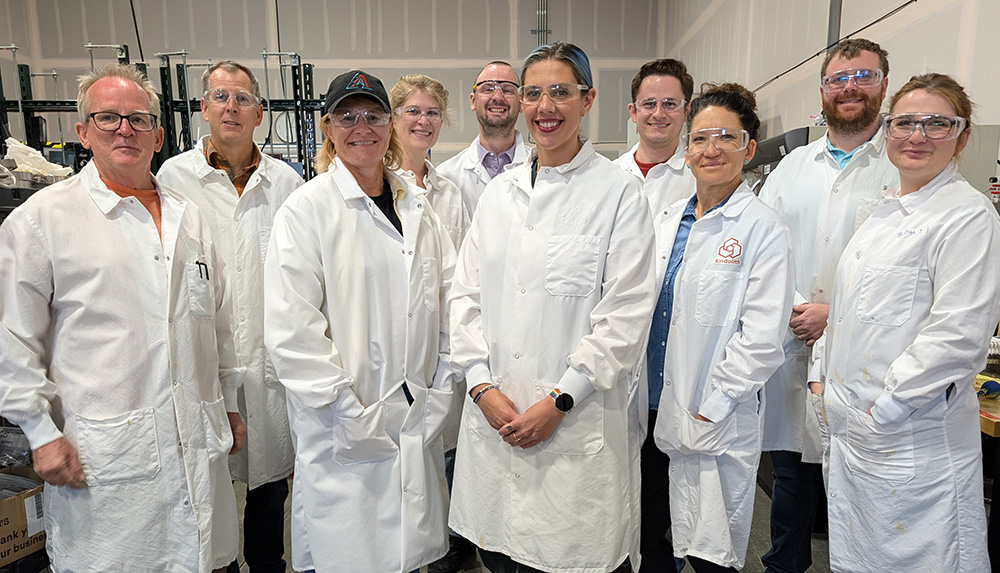From Microbes to Minerals: How Endolith Closes the Copper Demand Gap
The shift towards global electrification is monumental. The US data center footprint alone is expected to absorb 35 gigawatts of energy by 2030, more than twice the total demand in 2022 — consuming up to 9% of all electricity generated. Concurrently, 25 state governors have committed to quadruple the number of heat pumps to 20 million, and the International Maritime Organization demands maritime operators reduce net emissions by 40%, all before 2030.

The Copper Conundrum
The electrification economy is grappling with its own limitations as critical minerals become a bottleneck. Copper, for example is essential to electrification, and is facing a massive supply crisis — $25.3B in 2023, with demand projections for 2030 signaling a $111.6B delta. High-grade, easily accessible copper has been depleted, with over 70% of remaining deposits stuck in low-grade ores and global supply growth has been minimal, leading to a significant supply deficit. The traditional methods for copper leaching only access 50% or less of the copper. The rest remains stranded and the unutilized sulfur contributes to acid mine drainage.
Unleashing Microbes to Solve Macro Problems
To meet our ambitious electrification efforts, we’ll need breakthroughs in mining operations. Enter Endolith which offers a groundbreaking solution using microbial science to improve copper extraction. Their technology isolates and adapts microbial strains to various environmental conditions, demonstrating significantly greater leaching efficiencies than traditional methods. This allows operators to extract valuable copper from low-quality ores, optimizing yield with their AI-enabled genomics platform.
Operators are excited about Endolith’s cost advantages and environmental benefits. Their CAPEX light microbial facility integrates with existing infrastructure, increasing recovery rates and making previously hard-to-access copper supplies viable. Endolith’s approach has the potential to significantly enhance yields and reduce reliance on environmentally harmful reagents, offering a transformative solution for the industry.
The company’s approach perfectly encapsulates the villain test: Mine operators save money and drive more revenue by extracting additional copper yield from low-grade ores while using sustainable methods that cause no harm to the planet.
Today, we are thrilled to announce that we’re co-leading the company’s Seed round alongside our friends at Overture. We are also joined by the excellent folks at Grok Ventures, and Nucleus Capital.
An Inside Scoop with Liz
To learn more about how Endolith’s process works and the path forward, we sat down with its CEO, Liz Dennett for a brief conversation:

Liz Dennett (center) with the Endolith team.
Liz, how did you start thinking about sustainability, and why did you focus on the mining industry?
Sustainability has always been a really big deal for me. Growing up in Alaska, I saw the push and pull between resource extraction and caring for the environment. My PhD in astrobiology/geomicrobiology, where I studied how early microbes thrived on Earth, got me thinking about using nature’s oldest miners, microbes, to transform metals across the planet. As we accelerate our work towards the energy transition, copper is central to nearly all grid electrification efforts, and there are no better catalysts for eco-friendly copper extraction than these miners.
The approach Endolith is using isnt new to the industry. Why hasn’t it worked until now?
You’re right; biomining concepts have been around for decades. What’s different now is the convergence of several technological advancements. In the past, the industry lacked the precision tools to effectively harness and optimize microbial communities for large-scale mining operations. At Endolith, we’re leveraging synthetic biology techniques like Adaptive Laboratory Evolution, cloud computing, and advanced genomics to control and enhance these processes in ways that were previously impossible. The breakthroughs in these fields have allowed us to fine-tune the conditions under which microbes thrive and optimize their performance in real-time, which is a game changer for the industry.
What is your hope for the future of the mining industry?
I want to see a future where mining operations are not only sustainable but also regenerative—where the extraction of critical minerals contributes positively to the environment and local communities. I believe that with the right technologies we can make mining a key player in the global effort to combat climate change while ensuring a just energy transition for all.
Who is one of your heroes/role models? How has this person impacted your life?
Jadzia Dax from Star Trek Deep Space Nine. Growing up, there weren’t scientists in my textbooks that looked like me, so most of my early role models were characters that resonated with me in science fiction. This has actually been a great advantage, because since the late 80s and 90s, the line between what was once fiction and what’s now reality has become increasingly blurry, and I’ve benefited from role models who weren’t constrained by the physical reality of their time and space.
If you could invest in one other startup working in the broader climate technology space, which would it be?
If I could invest in one other startup in the broader climate technology space, it would be in a company at the intersection of regenerative agriculture, AI, and genetic tools—like Biographica. Ideas are relatively easy, but execution is the brutal part, which is why I’m a huge fan of backing strong teams at the seed stage, and their CEO Cecy Price is amazing. Biographica uses AI and cloud computing to accelerate the understanding of complex biological systems, which is essential for improving crop resilience given climate change and the intersection of multi-modal data.
How do you plan to use the funds raised in this round to advance the business?
To scale our operations and accelerate our technology development. We’re keenly focused on proving the effectiveness of our technology on a larger scale and moving us closer to full commercial deployment. Ultimately, this funding will help us achieve our broader mission of making mining more sustainable and environmentally friendly by refining and validating our innovative approaches across multiple real-world applications.